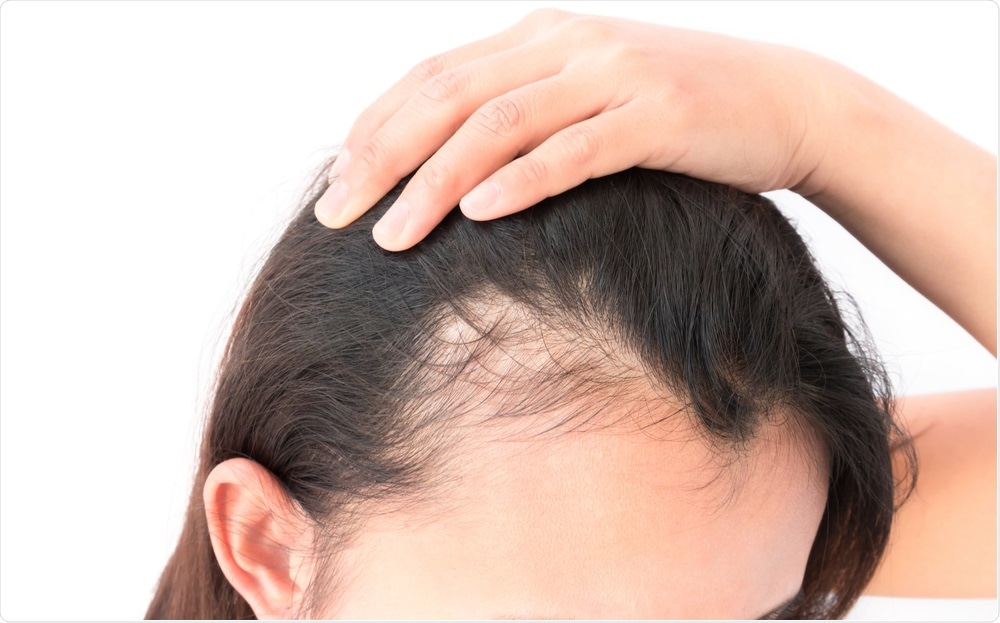Hair thinning can happen to anyone at any age. Contrary to popular belief, the amount of hair one has is not solely based on genetics. There are ways to restore hair, but understanding the cause can be crucial before starting a hair restoration treatment.
What Is The Definition of “Thinning Hair”?
Depending on the time of year, everyone loses some hair. Seasonal hair loss is a natural occurrence in the summer and late fall. Regardless if you are a man or a woman, hair shedding during specific times of the year is actually normal. So when does losing hair become a problem?
Hair loss that is described as thinning hair is often a minor to moderate amount of hair loss. The definition of thinning hair does not mean bald. Minor to moderate hair loss can mean a receding hairline that can make the appearance of a forehead look larger. It can also refer to bald spots on any part of the head. Thinning hair usually happens gradually over the span of several years making it difficult to identify.
5 Common Causes of Hair Loss
Hair loss can make some people feel self conscious, but even billionaires are struck with hair loss issues. Regardless of testosterone or genetics, there are several reasons why hair loss can occur.
1.) Color treatments. Hair color treatment is often overlooked as a cause for thinning hair. Over-treated hair can leave unwanted chemicals exposed to the follicles. Even hair dye that is professional grade can cause hair loss. Direct exposure to heat can also damage men’s hair. Hair dryers in particular exude strong and dry heat that can weaken the hair shaft.
2.) Lack of iron. Iron, folic acid and other minerals are essential to healthy hair. A lack of vitamin A and iron deficiency can actually contribute to hair loss. Since many of these specific minerals and vitamins can be found in food, diet can play a big role in the prevention or acceleration of hair loss. Not eating enough spinach, carrots or sweet potatoes can speed up the process of hair loss. A restrictive diet may work for weight loss, but unfortunately it can wreak havoc on hair.
3.) Thyroid issues. Thyroid disorders can cause rapid hair loss. This type of hair loss usually happens evenly throughout the head rather than in clumps. If you’re noticing a large amount of hair stuck inside combs or brushes, there may be an underlying medical condition. Thyroid disorders can affect sleep, hunger, weight and mood as well as hair. For a proper diagnosis, blood must be drawn by a medical professional. Once thyroid medication is in place, usually hair will restore itself naturally.
4.) Stress. Emotional trauma can cause hair loss as well as everyday life stress. A highly demanding job, extenuating obligations, child care and income inequality can cause sustaining stress that can contribute to the thinning of hair. Emotionally traumatic events that are not currently on-going can also cause hair loss. Emotional well-being and sleep are often tied to physical health issues and can be felt by anyone.
5.) The natural aging process. Mutations in the scalp’s renewing stem cells can make hair follicles shrink over time. This means that the initial hair is replaced by thinner strands of hair causing the actual thinning of one’s hair. Approximately 25% of men start going bald by the time they are thirty years old. Whether this is from male pattern baldness or another type of hair loss, losing hair is a frequent part of aging.
How Fast Does Hair Loss Happen?
Depending on the reason for hair loss, timing can vary. Most men start losing their hair in their thirties, but are not bald until fifteen to twenty years later. Losing hair from auto-immune diseases such as alopecia, can lose patches of hair at a much quicker rate.
There are some tricks to preventing hair loss from occurring at an earlier age. Hair treatment is a critical component to preventing hair loss for many people. If you find yourself dying or drying hair on a regular basis, this can speed up the hair loss process. Some hair treatment regimens can slow down the process of hair thinning by regulating the body. Vitamins and minerals from either supplements or natural food can often help keep hair strong and healthy.
Conclusion
Hair loss can happen to both men and women. While some men may take twenty years to fully bald, others may lose the majority of their hair in five. There are many factors when it comes to diagnosing hair loss. If you notice more hair in your brush or comb than normal, there’s a good chance that your hair may be thinning. To prevent or treat hair loss, there are as many solutions as there are causes. Choosing the right one can make all the difference.

Leave a Reply